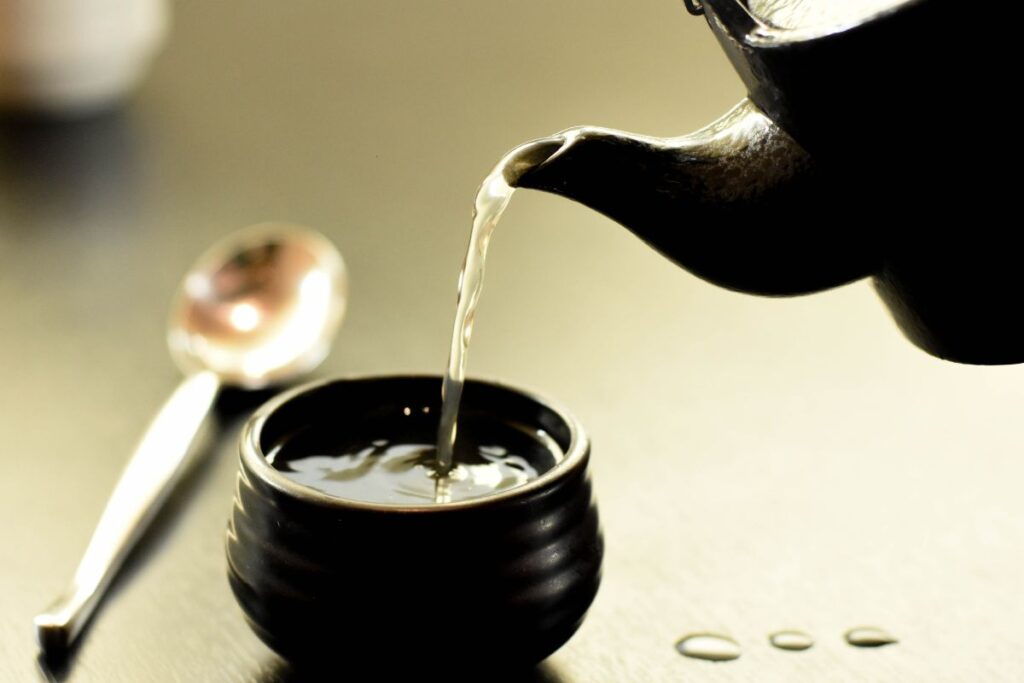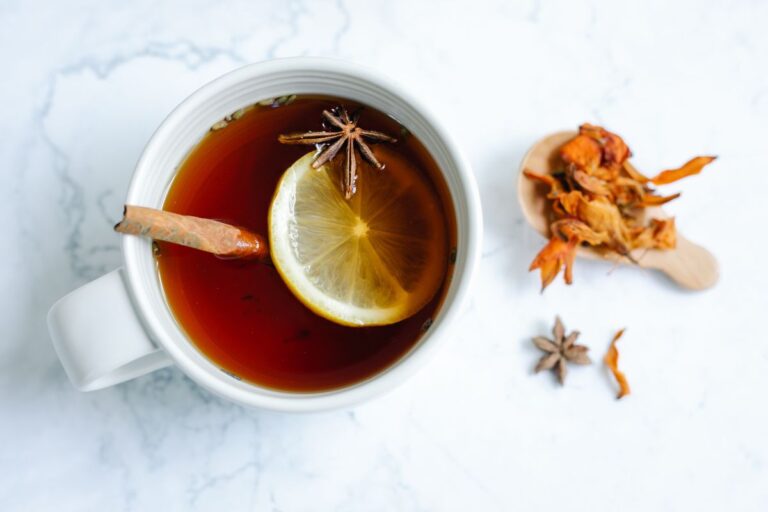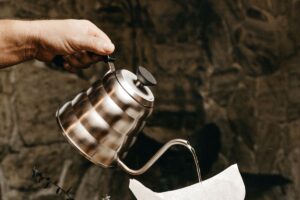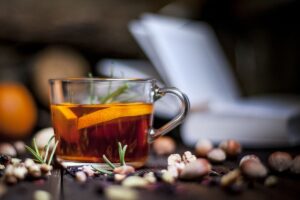Hey tea lovers! Are you looking for ways how to check tea quality at home? You’re in the right place!
Tea is our all-time companion. It’s with us in the morning, at noon, and in the evening.
When we’re mourning, that cup of tea is our comfort. In a happy mood, we want to go on a tea date with our friends.
But we must be sure we’re getting what we pay for.
Here’s that guide every tea lover can depend on to ensure they’re having high quality teas.
By Lilian.
The Simplest Tea Testing Methods (No Brewing)
High Quality Tea has a Unique Aroma/Smell
When you inhale deeply, high quality tea should have a very profound/distinct smell, depending on the type of tea leaves.
Green tea presents a fresh, light, soothing fragrance with grassy tinges; from a light orchid to a chestnut smell.
On the other hand, black tea should have a sweet, earthy, floral fragrance that shouldn’t linger easily.
Trace amounts of scent may point to a low quality tea or ones that’s too old.
What’s more, if the tea has a carbon or parched scent, this is a sure sign that it’s overstayed and therefore gone stale.
Physical Appearance Gives a Hint
Pour out a portion of the tea leaves on white paper and just have a look at it.
Premium tea leaves should look, well, like tea leaves.
With very minimal leaf breakages.
Not those that have too many stalks or woody remains.
If you proceed to rub it on your palm and a dusty substance remains, that tea was excessively dried, so it won’t be flavorful.
Basically, it’s low quality tea.
High Quality Tea has a Smooth Texture
Put the leaves between your hands. Premium quality tea leaves, when dried, should have a sturdy, smooth texture. Coarseness can be an indicator of low quality tea.
High quality tea should also feel like a slight substance of weight on your hands.
Otherwise, if it’s as light as a feather, it’s either been over-dried, or it has been prepared from leaves that have over-matured.
Another factor to consider is how the tea crumbles.
If it crumbles easily, it must’ve been baked too long or it’s just of lower quality.

How to Check Tea Quality After Brewing?
To use these methods, start by brewing the tea you intend to test. Then proceed to check for the following.
The Color of the Brew
Check the color of the tea after brewing.
It should have a rich color, more like watercolor paint, irrespective of the type of tea.
High quality black tea should have a bronze to dark, reddish gold color.
Green tea has an emerald green, yellowish color.
Oolong tea, on the other hand, should have a rich yellow/green shiny color.
The Aroma of the Wet Leaves and the Liquor
Pour off the water immediately after brewing then smell them closely.
When they’re hot, the tea leaves should have a more intense aroma than the liquor itself.
High quality tea has a pleasant, saturated, lingering aroma. For instance, green tea has that fresh aroma. Be it fresh vegetables, fresh orchids, chestnuts, etc.
If after brewing the leaves don’t yield any deep scent, or they have a terrible smell, it’s time to throw the tea bags/leaves out.
High Quality Tea has a Strong, Detectable Taste
Have a taste of the tea. Sip it without rush allowing it to flow to all parts of your tongue to ensure you reach all the taste buds.
If it’s a high-quality green tea, it should have a bright floral, vegetal, smooth, buttery and oceanic taste.
Black tea should have a more intense earthy, smoky, nutty, citrus, metallic and spiced taste.
Either way, irrespective of the type of tea, high quality tea should have a recognizable flavor.
Otherwise, if you notice you can barely identify the flavors, or it tastes more like an unpleasant chemical, then you could be tasting poor quality tea.
By the way, that unpleasant chemical could be iron fillings, or even a colorant. Read on!
How to Test Tea Quality Using Cold Water?
This is probably the easiest way to check whether your tea has any colorant additives.
Pour out the tea into a glass of cold water, or water at room temperature.
For pure tea, the color of the water should remain the same.
Otherwise, if the water changes to a reddish color, the tea leaves may have a colorant added to them.
Can I fill you in on the different types of teas around the world?
Sip on your cup of tea, legs crossed and read on!
Types of Tea Leaves
First, I must tell you that all types of teas come from the same tea plant.
It’s called Camellia sinensis.
The only difference comes in terms of how the tea leaves are processed.
With this in mind, here are the five main types of teas.
Black Tea
Black tea is the most widely consumed tea in the US and Europe.
It’s the tea that’s been 100% oxidized and has the highest caffeine levels – although the caffeine is just about half or a third of that in a similar cup of coffee.
It’s often served with milk, lemon or sugar.
Green Tea
Green tea has been stripped off any oxidation-causing enzymes.
When infused, it has a light greenish-yellow color.
Its caffeine levels are less than half of that in black tea.
Oolong Tea
Oolong tea has a light brown, pale yellow close to golden color.
It’s been partially oxidized, with some oolong teas going as low as 10% oxidations and others as high as 80%.
White Tea
White tea derives its name from the fine white hairs that cover the fresh, new leaves and buds from which white tea comes from.
It’s the least processed type of tea, and therefore has the highest level of antioxidants.
When brewed, white tea has a pale yellow color.
Yellow Tea
Yellow tea, sometimes called the miracle drink, is the rarest type of tea on this list. Probably because the techniques of preparing this tea are so complicated and time-consuming.
It’s prepared just like green tea, but the yellowing stage needs highly-skilled craftsmanship.
It has a bright yellow color.
Now that you know the different types of teas, you might have wondered whether to buy tea bags or loose leafs.
Let me enlighten you.
Is There a Difference in the Quality of Tea in Loose Leafs and Tea Bags?
According to Abigail Demarest, a well-traveled tea enthusiast, the closer the leaves are to their original/whole form, the higher the quality of that tea.
Tea leaves in their whole form have all the good stuff trapped in there.
Be it more essential oils, amino acids and flavonoids.
Because of this, they’re also more expensive.
Apparently, as Abigail puts it, the traditional paper tea bags are prepared from the dust that flies up in the air in the process of producing the whole-leaf teas.
From this, you can get why many tea aficionados prefer loose leaf teas to tea bags.
If you are looking for the very, very best quality green tea, then you can explore Japanese Matcha.
Photos by Anna Pou and NickyGirly





